Agatha Christie: Taking inspiration from the Nile
Agatha Christie: Taking inspiration from the Nile
Agatha Christie: Taking inspiration from the Nile
-
Hannah
-
Hannah

During her lifetime, Dame Agatha Christie wrote no fewer than 66 novels and 14 collections of short stories, and these were so popular that she was crowned the ‘Queen of Crime’. Even today, some 46 years after her death, she remains the best-selling novelist of all time.
Among her most famous novels is one set in an exotic and fascinating location: Egypt. I am referring, of course, to Death on the Nile, a 1937 crime misery starring Agatha’s Belgian detective Hercule Poirot. Set aboard the paddle steamer SS Karnak, the novel takes in the amazing sights of the river and the ancient monuments built along its banks.
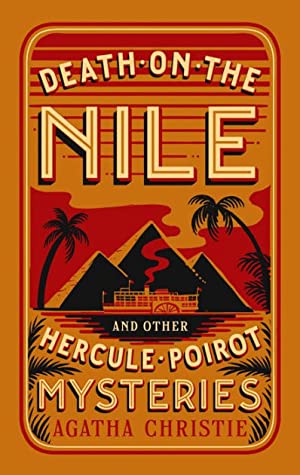
I know well, from my own experiences of both writing and travelling, that the seeds of a novel can be sewn well before the idea forms, and so, I think, it must have been for Agatha with Death on the Nile. When she was seventeen, Agatha, who was from a wealthy English family, spent a winter in Egypt with her mother, staying at the Gezirah Palace Hotel in Cairo. There, she lived the high life, much like the characters in my novel Song of the Nile, attending parties and balls and watching polo tournaments.
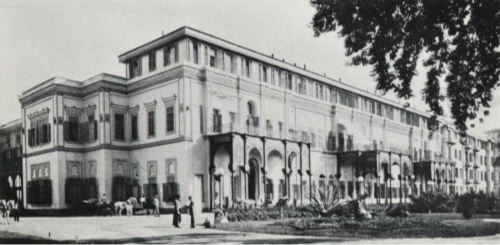
Gezireh Palace in 1906
Of course, Agatha and her mother also took the opportunity to visit some of the famous monuments of Egypt, like the Pyramids at Giza. We can imagine such historic and exotic sights were fuel for Agatha’s fertile imagination, even if she did not yet consider writing of them.
Fast-forward to the 1930s, by which time Agatha was in her forties and in her stride as a writer, and she was married to an archaeologist, Max Mallowan. For months of the year she would work with him on digs in the Middle East, and the couple travelled widely to places of archaeological interest – including Egypt. Now this land of sun and sand and buried secrets became her muse.
In 1937, Agatha took a suite at the Old Cataract Hotel in Aswan, and she stayed here for many months, writing her Egypt-inspired novel. Other than the mahogany desk in her suite, her favourite writing spot was a wicker chair on the balcony overlooking the view – and what a view! I know well the outlook from the Old Cataract Hotel, for it is one of my favourite places (see my article ‘Favourite writing spot: The Old Cataract Hotel on the Nile’).
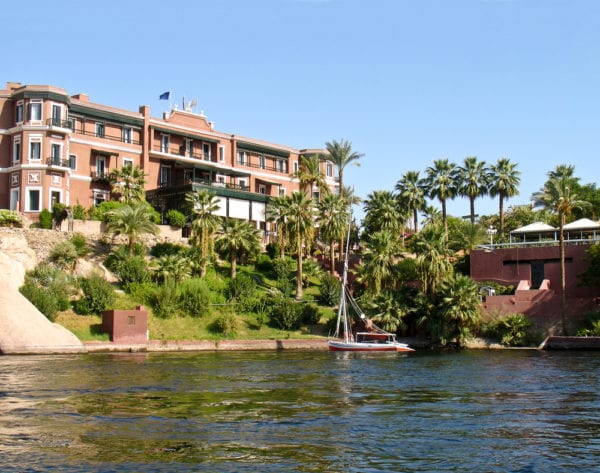
The Old Cataract Hotel
Agatha would have looked out at Elephantine Island, centre of the cult of the god Khnum, and at the boats gliding over the waters of the river, some of them wonderfully romantic, like the lateen sail boats used since antiquity and the steamships which would inspire Agatha’s invention of the Karnak.
The Old Cataract Hotel features in the novel, in all its opulence and glamour. So too does an important historic site: Abu Simbel at Aswan. Here, overlooking Lake Nasser, are two temples carved out of a cliff face: the Great Temple of Rameses II and the Temple of Hathor, built in around 1264 BC. (For more details on Abu Simbel, you can read my article ‘Abu Simbel, monument to the pharaoh Rameses II’).
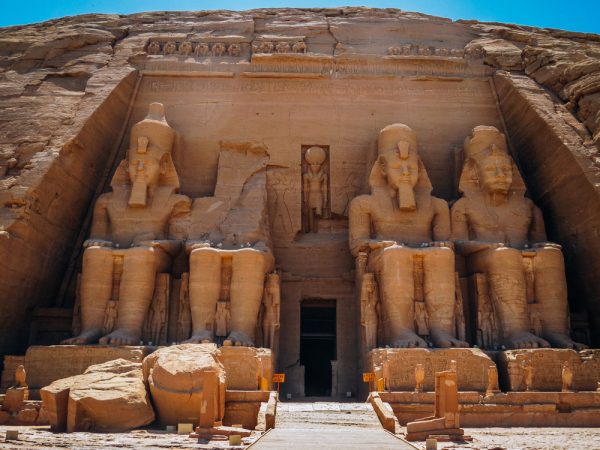
Great Temple of Rameses II
Both the Old Cataract Hotel and the temples of Abu Simbel have featured in on-screen versions of Death on the Nile, along with other iconic locations, like the temple complex of Karnak and the Pyramids at Giza. The Belle Époque steamship the PS Sudan was used as the SS Karnak (Agatha sailed on this vessel in 1933).
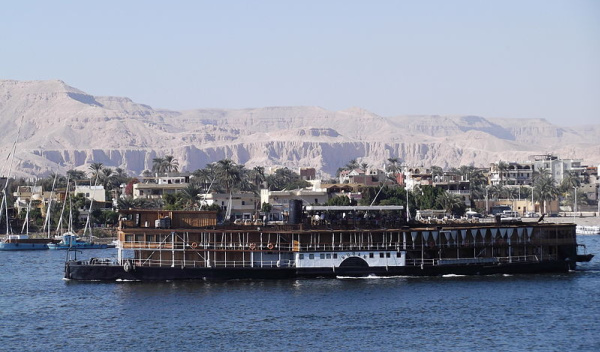
PS Sudan
If I have whetted your appetite for a trip down the Nile, perhaps you’ll enjoy watching the new film adaptation of Death on the Nile by Sir Kenneth Branagh, which is set to be released next month. I don’t believe it was shot on location in Egypt, though, so for a more authentic journey along the Nile, try the 1978 film with Peter Ustinov or the David Suchet television adaptation (2004).
Photo credits: 1) public domain; 2) Marcel Bakker/Shutterstock.com; 3) public domain; 4) Dittrich, P/Wikipedia; 5) airphoto.gr/Shutterstock.com; 6) Lu Yang/Shutterstock.com; 7) Fig wright/Wikipedia.